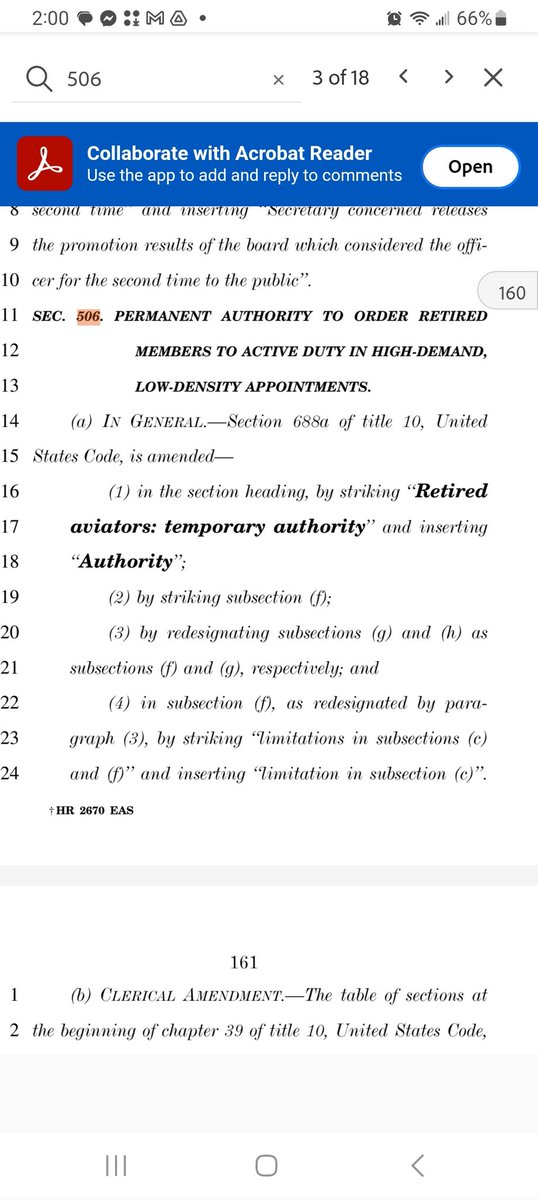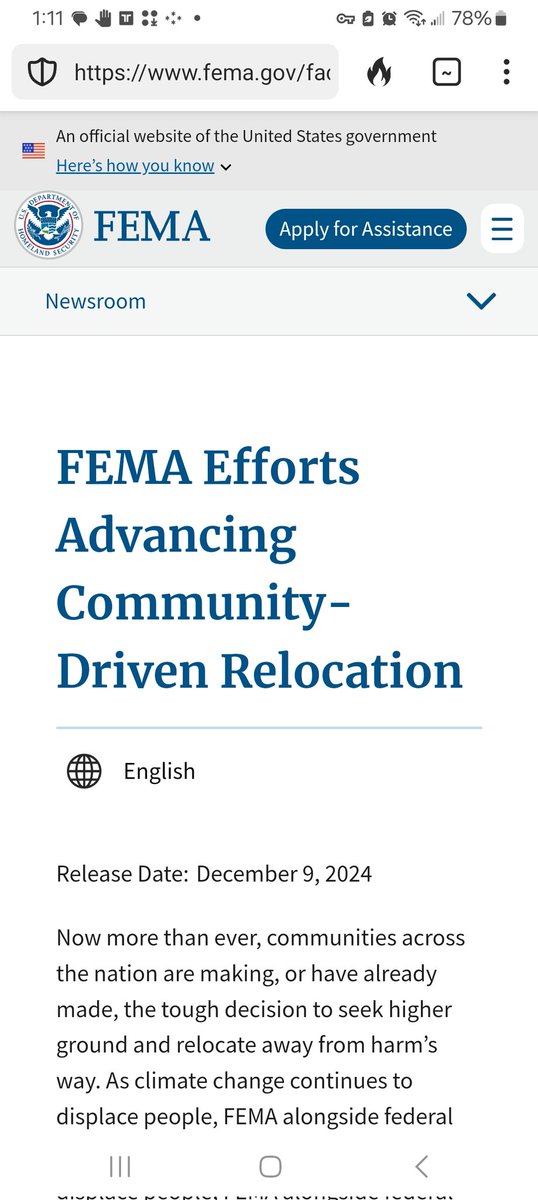🚨🧵The National Defense Authorization Act FY24🧵🚨
This massive Omnibus is extremely eye-opening, and I've only been able to get through 508 sections this far, so buckle up!
1. The DOD has been given "permanent authority" to call up retired members for active duty.
This massive Omnibus is extremely eye-opening, and I've only been able to get through 508 sections this far, so buckle up!
1. The DOD has been given "permanent authority" to call up retired members for active duty.

2. Congress and the Secretary of the Interior have authorized amendments to the "Sentinel Landscape Partnership," redefining "agricultural land owner" to "eligible owners" and "land managers."
"Sentinel landscapes are areas where conservation, working lands, and national defense interests converge. They are anchored by at least one high-value military installation or range and contain high priority lands for USDA, DOD, and DOI."



"Sentinel landscapes are areas where conservation, working lands, and national defense interests converge. They are anchored by at least one high-value military installation or range and contain high priority lands for USDA, DOD, and DOI."




4. Sec.1099AAA CRYPTO ASSETS &
SEC. 1099BBB. COMBATING ANONYMOUS CRYPTO ASSET 15 TRANSACTIONS(screenshots).
A new review board shall be constructed not later than two years after enactment to;
"assess the following relating to crypto assets, as determined by the Secretary:
6 (1) The adequacy of reporting obligations and
7 anti-money laundering programs under subsections
8 (g) and (h) of section 5318 of title 31, United States
9 Code, respectively as applied to those institutions.
10 (2) Compliance of those institutions with anti-
11 money laundering and countering the financing of
12 terrorism requirements under subchapter II of chapter
13 53 of title 31, United States Code. "


SEC. 1099BBB. COMBATING ANONYMOUS CRYPTO ASSET 15 TRANSACTIONS(screenshots).
A new review board shall be constructed not later than two years after enactment to;
"assess the following relating to crypto assets, as determined by the Secretary:
6 (1) The adequacy of reporting obligations and
7 anti-money laundering programs under subsections
8 (g) and (h) of section 5318 of title 31, United States
9 Code, respectively as applied to those institutions.
10 (2) Compliance of those institutions with anti-
11 money laundering and countering the financing of
12 terrorism requirements under subchapter II of chapter
13 53 of title 31, United States Code. "



6. Sections 501-591 outline recruitment programs beginning in secondary schools, JROTC, etc, relaxing test requirements, retention programs for current members, and prohibitions on the use of gender and pronouns in official correspondence.






Last tweet in thread.
Personal Thoughts:
I'll continue to review and share as I go. This is extremely eye-opening due to the fact that legislative concepts, which appear to fail in Congress, seemingly find their way into ever-increasing Omnibus budgets.
I'm nearly convinced that partisan stalemates are merely media facades, acted out for the public by both parties and both chambers. Meanwhile, the real policies get snuck into massive spending packages that are difficult to tease out and assess.
Regardless, these massive budgets increase the concentrated power of a handful of federal agencies. Many of which create committees that the public will not know about until dealing with the outcomes.
Our government is slowly getting away from us, and the checks and balances created to limit its authority. We no longer read congressional reports. We now read the federal register, e.g., and that speaks volumes to the growth of the administrative state.
We need to return to single issue bills before this authority leakage becomes an irreparable flood of authoritarianism.
Personal Thoughts:
I'll continue to review and share as I go. This is extremely eye-opening due to the fact that legislative concepts, which appear to fail in Congress, seemingly find their way into ever-increasing Omnibus budgets.
I'm nearly convinced that partisan stalemates are merely media facades, acted out for the public by both parties and both chambers. Meanwhile, the real policies get snuck into massive spending packages that are difficult to tease out and assess.
Regardless, these massive budgets increase the concentrated power of a handful of federal agencies. Many of which create committees that the public will not know about until dealing with the outcomes.
Our government is slowly getting away from us, and the checks and balances created to limit its authority. We no longer read congressional reports. We now read the federal register, e.g., and that speaks volumes to the growth of the administrative state.
We need to return to single issue bills before this authority leakage becomes an irreparable flood of authoritarianism.
@AmericaMission_ @ThaWoodChipper @NameRedacted247 @_Kimsays @DustinStockton @JenLawrence21 @monicaonairtalk @RealMattCouch
Point of clarity - in my first tweet, what I mean is that if this bill should pass as currently written, "The DOD has been given...." In this policy.
In hindsight, I wrongly assumed every reader would know this bill is currently going through Congress.
I apologize for any confusion, but I'm also grateful for this opportunity to learn how to reach broader audiences and craft my threads accordingly.
I'm both delighted and shocked by the amount of traction this policy thread has created. Going forward, I will endeavor to write my posts and choose my words more concisely.
In hindsight, I wrongly assumed every reader would know this bill is currently going through Congress.
I apologize for any confusion, but I'm also grateful for this opportunity to learn how to reach broader audiences and craft my threads accordingly.
I'm both delighted and shocked by the amount of traction this policy thread has created. Going forward, I will endeavor to write my posts and choose my words more concisely.
• • •
Missing some Tweet in this thread? You can try to
force a refresh



































